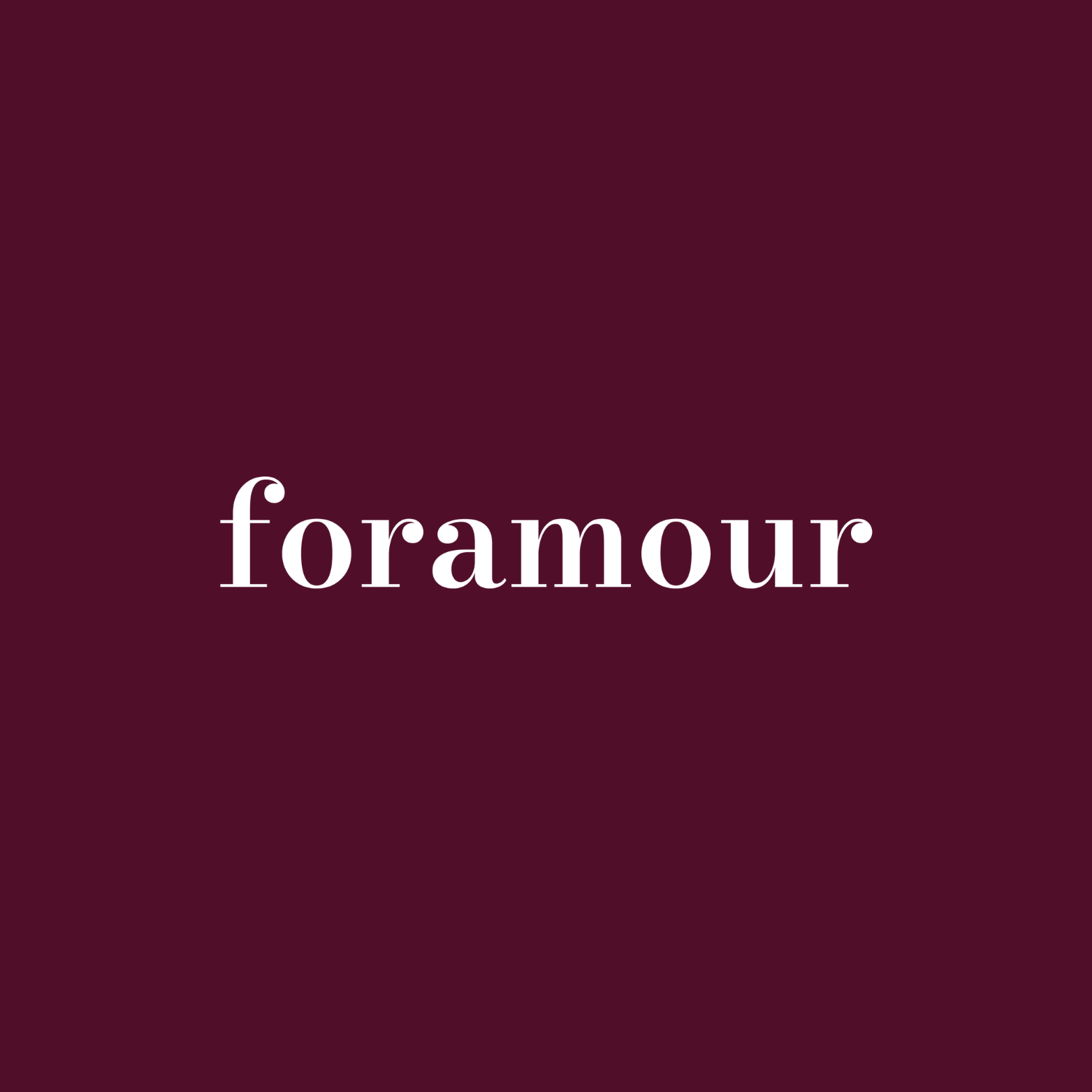
The Influence of Cultural Traditions on Jewelry Designs
In the heart of Jaipur's vibrant bazaars, shoppers haggle over shimmering Kundan sets, each piece echoing the grandeur of Rajasthan's storied palaces. Meanwhile, in Kerala's serene temples, families select ornate gold ornaments for upcoming weddings, where every gram symbolizes prosperity and continuity. Jewelry in India transcends mere decoration; it embodies a profound cultural legacy, weaving together rituals, identity, and economic vitality. This sector not only fuels personal expression but also bolsters the nation's economy significantly. As per recent data, the gems and jewelry industry accounts for approximately 7% of India's GDP and provides employment to over five million individuals.
Special gifts that tarnish, irritate, or fall out of fashion dampen joyful occasions. That disappointment clouds memories meant to endure. Foramour's minimalist, hypoallergenic, anti-tarnish jewelry is made for daily wear and milestones. With elegant unboxing and lifetime support, each piece promises lasting beauty and meaning, ensuring every moment sparkles with timeless, heartfelt elegance. Shop Now!
Tradition Meets Design: How India's Cultural Heritage Shapes Modern Jewelry
At its core, India's jewelry landscape pulses with age-old customs that infuse every creation with deeper significance. Consider the mangalsutra, a sacred necklace symbolizing marital bonds, or the Navratna arrangement, where nine gemstones align with planetary influences to promote well-being. These elements blend social customs, spiritual beliefs, and artistic flair, making jewelry an integral part of life's milestones. However, contemporary buyers in bustling cities such as Mumbai and Delhi seek items that respect these traditions yet adapt to modern, hectic lifestyles. This has spurred a thriving industry where skilled craftspeople and brands innovate, crafting heritage-inspired designs that captivate both conservative households and trend-savvy younger generations.
The worldwide appetite for such luxurious items is evident in market figures. The international jewelry sector, valued at USD 232.94 billion in 2024, is anticipated to expand from USD 242.79 billion this year to USD 343.90 billion by 2032, achieving a compound annual growth rate of 5.10%. This surge highlights a broader inclination toward premium goods that accentuate individual features, reflect current styles, and elevate appearances. In India, this momentum is intensified by an ingrained affinity for gold, precious stones, and narrative-driven artistry. The Asia Pacific area, with India at the forefront, secured a 39.28% portion of the global market last year, affirming India's influential position in directing international jewelry directions.
Diving deeper, the growth stems from escalating disposable incomes worldwide, especially among working women, alongside fashion evolutions and a push for bespoke accessories. In Asia Pacific, which commanded 60.2% of the market in 2024, India's role is pivotal due to its middle-class expansion and cultural emphasis on gold.
Emerging Trends: Blending Heritage with Modernity
Step into a traditional South Indian matrimonial ceremony, and the bride's ensemble dazzles with elaborate gold adornments temple-inspired necklaces etched with divine figures and jhumkas that dance lightly. In regions like Tamil Nadu and Kerala, these hefty pieces are indispensable, representing abundance and celestial favor. Nevertheless, adaptation is underway; jewelers now produce slimmer variants employing cutting-edge methods to preserve extravagance while ensuring comfort for everyday wear.
Seasonal celebrations profoundly invigorate India's jewelry commerce. Events such as Dhanteras, Diwali, and Akshaya Tritiya prompt throngs to acquire gold coins, armlets, and motif-embellished items. Reports indicate that gold intake escalates markedly during these times, underscoring its dual function as asset and ornament.
Concurrently, local artistic styles are transcending boundaries. Rajasthan's Kundan and Meenakari techniques, previously regional, now grace metropolitan dwellers in refined, understated incarnations. Gujarat's Polki, featuring raw diamonds, integrates into featherweight studs and charms for the youth.
The younger demographics millennials and Generation Z are spearheading a pivot to emblematic, functional aesthetics. The mangalsutra evolves from a cumbersome linkage to a subtle locket with chic accents. Navratna configurations, rooted in astrological lore, are refreshed in modern mounts that allure style-oriented city folk. This amalgamation of antiquity and novelty isn't fleeting; it exemplifies India's resilience in progressing while safeguarding its essence. Moreover, with gold prices climbing reaching record highs like 109,840 rupees per 10 grams recently consumers are exploring alternatives, yet festive demand persists.
Real-World Impact: Brands and Artisans Leading the Way
Prominent jewelry enterprises are harnessing this cultural resurgence adeptly. Tanishq, a premier Indian vendor, excels in narrative via lines like Ekatvam, which honors the nation's multifaceted nuptial customs. Encompassing Assamese Jonbiri lobes to Bengali Shankha Pola cuffs, Tanishq interlaces provincial legacies into universally appealing creations. Likewise, Tribe by Amrapali in Jaipur reinvents Rajasthani patterns for city adolescents, merging vibrant jewels with streamlined contours.
In northern hubs like Delhi and Noida, PC Jeweller leverages occasion-based surges, introducing assortments linked to indigenous observances such as Karva Chauth and Diwali.
At the community tier, India's One District One Product initiative revitalizes ancestral crafts. Karnataka's Bidri, characterized by silver overlays on darkened alloy, and Rajasthan's Thewa, melding aurum onto vitreous surfaces, are accessing fresh arenas through official backing and heightened interest in genuine, manual artifacts.
The international handmade jewelry arena,valued at $151.5 billion in 2022, is forecasted to attain $472.5 billion by 2032, advancing at a 11.9% CAGR, emphasizing the escalating appreciation for such skilled endeavors, where each item mirrors the creator's expertise and cultural lineage. In India, this resonates strongly, as the nation leads in gold production and usage, with handmade pieces carrying sentimental weight in rituals.
Challenges: Navigating a Complex Market
Harmonizing legacy with contemporaneity poses substantial hurdles. Emerging patrons favor airy, adaptable wares, whereas kin often favor the substantiality and complexity of heirloom styles. Escalating gold valuations, monitored through commodity analyses, introduce further intricacies, nudging buyers toward substitutes like cultivated diamonds or repurposed elements.
Forgery perils loom large, as factory-made duplicates erode the integrity of handcrafted masterpieces.
India's geographical variety, a boon, complicates broadening ancestral motifs. A resplendent Kundan collar thriving in Rajasthan might seem incongruous in austere Bengaluru. Merchants must maneuver these variances while upholding genuineness, demanding cultural acuity and commercial astuteness. Additionally, regulatory shifts, like proposals allowing foreign participation in gold trading, could influence market dynamics.
Opportunities: A Global Stage for Indian Designs
Notwithstanding obstacles, prospects abound. Indian adornments, notably Polki and Kundan, are captivating diaspora communities, as highlighted in sector evaluations. The global jewelry domain, estimated at USD 366.79 billion in 2024, is poised to ascend to USD 578.45 billion by 2033, progressing at a 5.3% CAGR, progressively swayed by India's distinctive offerings. The gold category, capturing 54.9% in 2024, underpins this expansion.The administration has pinpointed the sector for export enhancement, given its augmentation potential.
Innovation is reshaping the field. Artificial intelligence-assisted design tools aid in replicating vintage patterns precisely, while online marketplaces democratize access to territorial styles. Heritage tourism in locales like Rajasthan, Tamil Nadu, and Kerala amplifies interest, with tourists pursuing authentic mementos rooted in native practices. Urbanites in places like Bengaluru propel calls for responsibly procured stones and reclaimed gold, synchronizing with worldwide eco-conscious movements. Furthermore, India's jewelry market is on a strong upward trajectory, with growth driven by rising consumer incomes, evolving fashion preferences, and increasing global appreciation for the country's craftsmanship. This expansion is supported by both domestic demand and international opportunities, as heritage-inspired designs continue to blend with modern sensibilities. Sustainability and ethical sourcing are also shaping buyer choices, ensuring that the sector's progress is fueled by values as much as by aesthetics.
A Memorable Crafting the Future
As India's jewelry realm advances, it persists as a lively mosaic of convention and ingenuity. Academics from institutions like the National Institute of Fashion Technology and National Institute of Design view jewelry as a repository of culture, safeguarding narratives of devotion, selfhood, and creativity.
Sector pundits foresee amalgamated aesthetics envision sanctuary emblems forged in ethereal composites commanding the forthcoming era, merging legacy with utility. For vendors, advancement hinges on narrative: fashioning items that venerate India's history whilst addressing its tomorrow. In such a fiercely contested arena, those who adeptly equilibrium these facets will radiate most luminously.
Frequently Asked Questions
How do Indian cultural traditions influence modern jewelry designs?
Indian cultural traditions deeply shape modern jewelry through sacred symbols like the mangalsutra for marital bonds and Navratna arrangements featuring nine gemstones for astrological benefits. Contemporary designers blend these heritage elements with modern aesthetics, creating lighter, more wearable versions of traditional pieces like temple-inspired necklaces and Kundan sets. This fusion allows younger generations to honor cultural significance while adapting to urban lifestyles and current fashion trends.
What are the most popular traditional Indian jewelry styles being modernized today?
The most sought-after traditional styles include Rajasthan's Kundan and Meenakari techniques, Gujarat's Polki featuring raw diamonds, and South Indian temple jewelry with divine motifs. These regional specialties are being transformed into contemporary pieces like lightweight studs, subtle lockets, and streamlined designs that maintain cultural authenticity while offering everyday wearability. Brands like Tanishq and Tribe by Amrapali are leading this modernization movement across India's diverse jewelry landscape.
Why is the Indian jewelry market experiencing significant growth globally?
India's jewelry market is projected to grow from USD 100.94 billion in 2024 to USD 168.62 billion by 2030, driven by rising disposable incomes, cultural emphasis on gold ownership, and festival-driven purchasing during celebrations like Diwali and Dhanteras. The Asia Pacific region, with India at the forefront, captured 39.28% of the global jewelry market, reflecting strong international demand for authentic handcrafted pieces that blend traditional artistry with modern design sensibilities.
Disclaimer: The above helpful resources content contains personal opinions and experiences. The information provided is for general knowledge and does not constitute professional advice.
You may also be interested in: Custom Jewellery Gains Ground in Emotional Gift-Giving – foramour
Special gifts that tarnish, irritate, or fall out of fashion dampen joyful occasions. That disappointment clouds memories meant to endure. Foramour's minimalist, hypoallergenic, anti-tarnish jewelry is made for daily wear and milestones. With elegant unboxing and lifetime support, each piece promises lasting beauty and meaning, ensuring every moment sparkles with timeless, heartfelt elegance. Shop Now!
Powered by flareAI.co
Share


